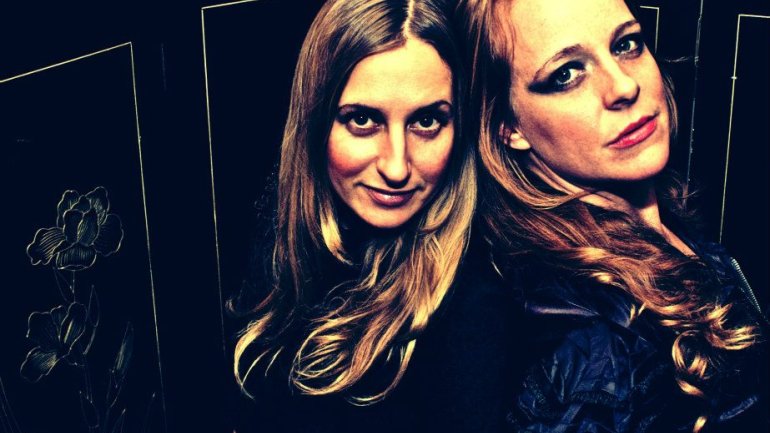Better Business: Minneapolis’ New Showroom
There’s some kind of cosmic harmony in Minneapolis today. Just as American Craft launches its first-ever digital bonus issue (devoted to great independent design), across town a new kind of design-minded retail space is opened its doors for the first time.
Showroom is a creative concept: a place where designers and artists can sell their work, yes, but also meet with clients and cross-promote; the space is filled with a mix of fashion and jewelry, furniture and visual art (in a curated exhibition area). It sounds so simple, and yet Showroom (at 615 W. Lake Street) fills gaps – such as providing a storefront for small business artisans, many of whom work out of homes or small studios, point out co-founders Kimberly Jurek and Jen Chilstrom.
The goal, Jurek and Chilstrom say, is to bolster the independent design community in the Twin Cities. The smart, savvy women, who are also partners in Kjurek, a women’s clothing label, have big plans – and were kind enough, in the middle of their hectic launch week, to tell us all about them. (Not in the area? Read on and get inspired. Your city probably needs a Showroom too.)
So, first, a little background: Tell us a little more about the Showroom concept. You have a great sign in your window that says it’s “where fashion, jewelry, accessories, art, furniture, and music cooperate.”
The mission of Showroom is to elevate the professionalism of independent design in the Twin Cities – as a collective and a diverse body. First and foremost, we’re a place where designers and artists can meet with clients, have a retail storefront, potentially produce their work, and cross-promote. Secondly, we’re a retail store with a unique list of client services – individual styling or alterations with designers, private shopping parties, to name a few.
Each designer contributes a little each month and collects full retail for their work (minus a small percentage to contribute to expenses for running the shop), so when you purchase from a designer, you directly support that designer and Showroom.
Because of the unique opportunities for cross-promotion between these diverse artists – for example, a handmade scorched oak table with a handcrafted metal sculpture that displays jewelry, each thing for sale and available for custom order –we can't emphasize enough how it's not alone, but through supporting each other on many different levels that all of the individuals involved will be good businesses and contribute and be resourceful to the community.
We will strive to grow into bigger opportunities for our designers outside of having a retail storefront in the future: trade shows, fashion shows, production, more accessible opportunities for successful marketing and advertising, eventually better access to healthcare and so on. But for now our focus is on in-store events, trunk shows, art openings, and business development.
What kind of experience do you hope people will have, walking into the space?
We want to create an atmosphere that is different than a highly merchandised visual retail space. Something more like an interactive gallery where you are mindful but also can be very hands on in many different ways. Something that isn't pretentious, that allows you to be imaginative. When you walk in you want to dig in because it is subtle and suggestive. You are aware when you walk in that you are exposed to artists and designers who hand craft a variety of things, in a variety of mediums and want to hear the unique stories and feel connected and supportive. We want people to feel proud of our space because of the impact we have on our designers and how we represent them in the community.
Speaking of those designers and artists – what do you hope Showroom is to them?
We want Showroom to be the place where designers have access to opportunities they couldn't normally do or have time for on their own. As small business artisans, we work out of small studios, our homes, and often have full- or part-time jobs. Because both of us will be working full time in the space, it will allow designers who couldn’t normally commit full-time hours to be represented in the retail space each and every day. This could be an opportunity for some artists to begin transitioning into a career from their craft.
It’s also a place where the cross-promotion will create exciting opportunities – for example a jewelry designer showing their work during fashion week for the first time on the runway with an established fashion designer. Already Showroom has helped some of its designers open their LLCs, assisted with designing business tags and other promotional materials, and has worked to get each designer "retail ready” in various ways. Of course, some of our designers have had all of these things in place! We believe by bringing in a mix of established as well as new and up-and-coming artists, and that each of our designers has strengths and together we have a unique blend of energy.
Showroom is also preparing its designers with trend and retail analysis, and working to help sustain their participation and development. We want our designers to grow, develop and succeed in their businesses.
We are also in the process of creating relationships with local colleges for budding designers – imagine being able to support or pay for some of your schooling by having a place to retail your designs or gain credit or experience by interning directly in your field. We believe there are many layers of opportunity for our designers, the community, and for local retailers. Some retailers travel to trade shows to buy merchandise every year – our designers who will wholesale, not just retail, out of Showroom are essentially a local trade show and we hope to see their brands expressed nationwide.
We hope that Showroom is a home and support to each of its designers and their brands and a means to reach their creative and business goals.
Can you tell us a little more about the business model? It’s quite unique; did you have any inspiration or models?
Our passion and idea for the space started with a cooperative model in mind and we do consult with our board, designers, and advisers when making decisions for the business. We structured as an LLC, first to secure the leasing of the space and second to speed up the process of opening the store in a timely fashion without potential setbacks of voting and committees. We also wanted to secure the future of the business from dissolution and give it a foundation to grow into a co-op structure if that is a direction that would benefit the collective body.
We had to restructure our earlier membership/profit-sharing model to one that we think will be stronger because – while the risk falls on us, the directors and owners of the space, who will drive the model and business plan – it also resolves the issue of when or how often a large group of designers will be able or willing to participate. We have two levels of participation based on the needs of the designers. Instead of profit sharing at the end of the year, we set up a work-for-trade system and adjusted our expense percentages off monthly retail commissions to give back more to designers monthly.
We feel very grateful for all of the support we have in the community. We began discussing the idea last year with MCEF as well as MN Fashion and Springboard for the Arts. Our model resembled another business we found in Cleveland called Design Lab; we were able to discuss at length that model, its successes and failures, as well as structure.
We have also connected with our local neighborhood and business organizations to develop a more organic and meaningful exposure and involvement in our immediate community. And we have consulted with business attorney Kim Lowe at Fredrickson and Byron who really delved into our contracts, business plan, and structuring in away that represents everyone to the best of our ability.
Local veteran designers who are not a part of Showroom have given incredible feedback on how and what we offer designers. In addition, some of the veteran shops that carry Kjurek wholesale shared their experiences and been a soundboard for our model. We have two wonderful people working on our marketing with us to project us outside of our immediate community. And we’ll continue to look for collaboration opportunities. We look forward to developing relationships with other organizations that can provide meaningful experiences in the community.
On a similar business-minded note: You’ve said this whole idea – the Showroom concept, opening up a brick-and-mortar retail/gallery space – grew out of wanting to create a more sustainable future for Kjurek, a conversation that started last year when you, Jen, came on as co-owner and lead designer. Can you talk a little bit more about that? I’m asking because it’s such a refreshing departure from hearing about people shifting their emphasis online.
When the two of us began to co-own and co-design Kjurek, we looked at where the brand has been and where we see it going. We talked about goal setting and comparatively what was happening with fashion in the Twin Cities and how it would affect the brand. Really the entire plan and model for the business grew out of our hopes for how we want to see independent fashion grow in the Twin Cities and how that could, in effect, help grow our brand. "Be the change...."
We knew that the label needed a better space for production, a professional space to meet clients, and a retail storefront. Not just an online store. From our collective years and experiences in the design and arts community, we knew that this was a common feeling and trend with our colleagues in the design community. It seemed to make perfect sense then to create a retail business that could be shared and made sustainable through everyone's contribution.
Seems like a perfect segue for you to tell us about a few of the artists and designers whose work you’ll be showing, then, in addition to Kjurek designs.
We are pleased to announce and welcome: Kjurek by Kim Jurek and Jen Chilstrom, Cocoon by Elizabeth Geisler, Ixmukane by Carlos Higueros, Milan'a'Stile by Milana Tolins, Tessa Louise by Tessa Druley, Metta Body by Lauren Haskell, Jag3 Jewelry Design by Betty Jaeger, Marissa Bridges by Marissa Bridges, Viska by Jeanie Trelles, Foat by Kaya Foat and Zoe Foat Naselaris and Post by Lois Munemitsu Eliason and Katie McShane.
In addition we will be featuring commissioned furniture from Live Oak Ironworks by Clay Beardshear and Tinetti Fine Furniture by Paul Tinetti. Our first fine artist installation will be by Laura Bennett. Some of these bios are up and available on our website if people want to read more.
For the gallery space, Jim Bozicevich, who has worked in framing and art installation, has been a great resource for finding talented local visual artists. There seems to be a gray area in visual art between gallery representation and showing art in coffee shops. We want to allow visual artists the opportunity to have a space where they can meet with buyers and be professional in representing themselves and their work.
Julie K. Hanus is American Craft's senior editor.




